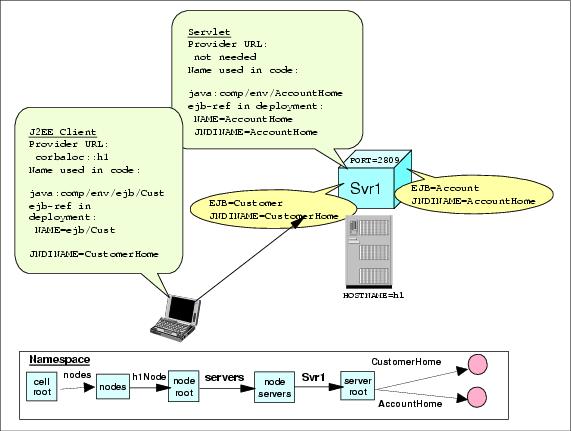
11.10.1 Single serverIn the single-server environment, the naming functionality works in exactly the same way as in WAS V4. There is only one server and only one root context and, therefore, no ambiguity in the location of a named object. This is illustrated by the example in Figure 11-5.
Figure 11-5 Single server By accessing the server root directly, the J2EE or servlet client does not need to traverse the cell name space (cell root | servers | server root | object).
In a single-server, the server root acts as the default bootstrap, and should be assigned port 2809. Clients external to the server process using the provider URL do not need a port number. If the named object is looked up by a client running in the same process, then a provider URL, and corbaloc, is not needed. By default, the lookup is performed against the local process name space. Table 11-7 illustrates the Provider URL. Table 11-7 Lookup settings required for a single server
|

